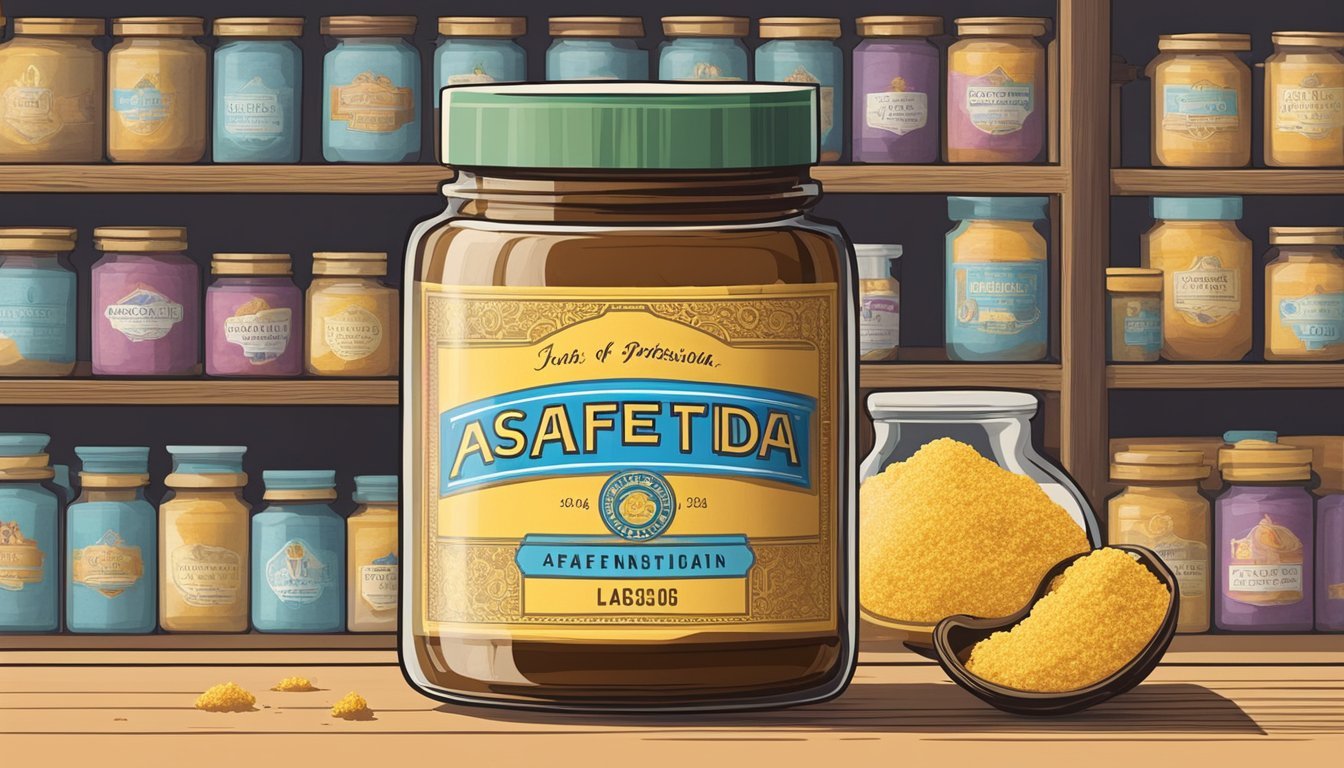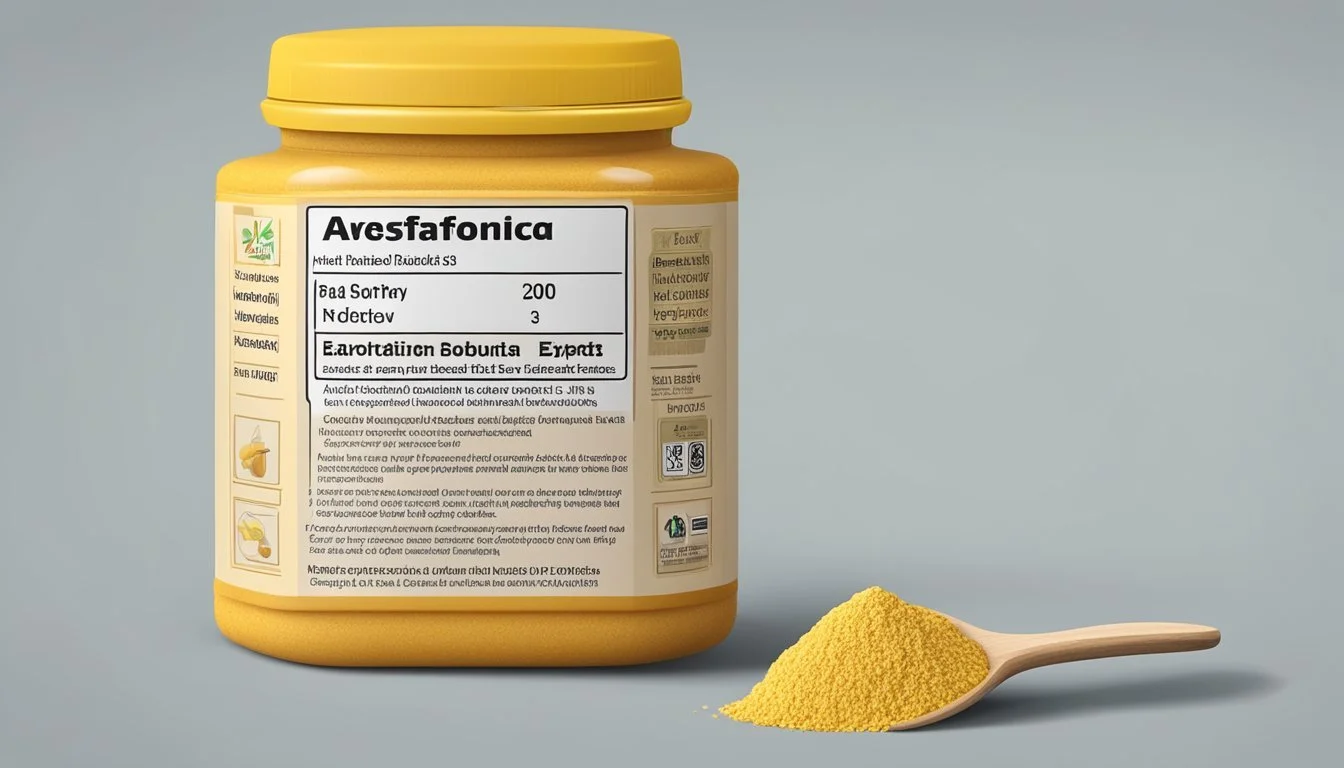How Long Does Asafoetida Last?
Shelf Life and Storage Insights
Asafoetida, a potent spice hailing from the dried sap of the Ferula species of plants, is a staple ingredient in many Indian dishes, imparting a unique flavor that's often compared to leeks, garlic, or even meat when cooked. Known for its pungent aroma, asafoetida is typically sold as a coarse, yellow powder and is an essential component in tempering spices or seasoning blends in various cuisines. It brings depth and savoriness to dishes, acting as a flavor enhancer.
The longevity of asafoetida in a culinary arsenal is noteworthy. When stored properly, asafoetida retains its quality for an extended period. A cool, dry, and dark location contributes to preserving its potency, allowing it to last up to a year without a significant loss in aroma or taste.
Given its strong smell and potential for clumping if exposed to moisture, asafoetida requires proper packing, usually in airtight containers. The effectiveness of storage methods directly impacts the shelf life of asafoetida, with some chefs recommending its usage within months from opening to ensure its distinctive flavor remains intact. However, under optimal storage conditions, asafoetida can maintain its efficacy for two to three years, making it a long-lasting addition to any spice collection.
What Is Asafoetida?
Asafoetida is a distinctive spice with a pungent aroma and significant culinary and medicinal applications. It is characteristically derived from the sap of the ferula plant.
Origins and Names
Asafoetida, commonly known as hing in India, is sourced from the Ferula species, particularly Ferula asafoetida. This gum resin is native to Iran and Afghanistan, with a history of use that stretches back to the ancient Romans and Greeks. In Latin, it is referred to as foetida, meaning "stinking" which gives rise to its English nickname — "devil's dung" or "stinking gum." Its names in other languages, such as Persian and Arabic, reflect its strong odor and potential medicinal qualities.
Asafoetida in Cuisine
In Iranian and Indian cuisine, asafoetida plays a crucial role. It is often used as a condiment and referred to as hing when ground into powder form. Asafoetida imparts a smooth and savory onion-garlic flavor especially when cooked, which is why it is an indispensable ingredient in many spice blends. It is particularly favored in dishes where the use of onion and garlic is culturally or religiously restricted.
Properties of Asafoetida
Asafoetida is renowned for its distinctive flavor and aroma, owing to its complex chemical composition and physical characteristics. This section explores these fundamental properties.
Chemical Composition
Asafoetida's pungent smell and taste are primarily due to its rich content of sulfur compounds. The resin comprises various constituents including essential oil, which contains a mix of compounds such as terpenes and sulfur-containing derivatives. Asafoetida also contains a range of other compounds like tannins and flavonoids, which possess antioxidant properties. Ferulic acid is another notable component, contributing to the resin's profile of active compounds.
Primary Components in Essential Oil:
Sulfur Compounds
Terpenes
Additional Notable Compounds:
Tannins
Flavonoids
Ferulic Acid
Physical Characteristics
The physical form of asafoetida is that of an oleoresin extracted from the roots of the Ferula species. It is a gum-like substance with a sticky texture. In its raw state, asafoetida is a grayish-white resin that darkens upon exposure to air, developing a more intense aroma. Due to its strong and distinct scent, it needs to be stored properly to maintain its properties and prevent contamination of other foods.
Appearance: Grayish-white, darkening with age
Texture: Sticky, gum-like
Odor: Strong and distinct
Culinary Uses
Asafoetida, an essential spice in Indian cuisine, is quintessential for its potent flavor that simulates notes of garlic and onions. It forms a core component of various spices blends and is cherished for its capacity to impart a savory depth to dishes.
Common Dishes
Asafoetida is predominantly used in Indian cooking, particularly in legume or lentil dishes, as it not only adds an umami flavor but also is believed to aid in digestion. It features prominently in recipes such as Dal (lentil stew), various types of Curries, and in the tempering of Pickles. In these dishes, it's normally fried briefly in ghee (how long does ghee last?) or oil at the beginning to mellow its strong raw flavor.
Dal Tadka: Asafoetida is sprinkled during the tempering process.
Aloo Gobi: Used to enhance the taste of this potato and cauliflower dish.
Rasam: A fragrant South Indian soup flavored with asafoetida.
Substitute Ingredients
In absence of asafoetida, cooks may opt to use garlic or onion powder (how long does onion powder last?) as an alternative, conscious that while similar in their pungency, they are not identical in flavor. A blend of these with a pinch of fenugreek can somewhat mimic asafoetida's unique taste.
Garlic Powder: A common substitute, yet with a milder flavor.
Onion Powder: Offers a different dimension of sweetness.
Fenugreek Seeds: These can add an aromatic quality when mixed with the above substitutes.
Typically, asafoetida is sold as a powder, often mixed with a stabilizer like rice flour (how long does rice flour last?) to prevent caking, which also makes it easier to measure and use in cooking.
Health and Medicinal Benefits
Asafoetida, known for its pungent aroma, also offers an array of health benefits, particularly in aiding digestion and respiratory conditions. This section delves into the specific medical advantages associated with asafoetida.
Digestive Health
Asafoetida is highly regarded as a digestive aid. It may help alleviate common digestive issues such as bloating, flatulence, and symptoms of irritable bowel syndrome (IBS). Its antispasmodic properties can reduce stomach cramps and aid in smoother digestion. The resin has been traditionally used to combat intestinal gas, suggesting its role in maintaining a healthy digestive system.
Respiratory Ailments
For respiratory conditions, asafoetida is believed to provide relief from asthma and bronchitis due to its expectorant qualities. It relaxes the air passages, facilitating better breathing in individuals. The compound’s anti-inflammatory effects are pivotal in reducing respiratory inflammation, thereby addressing symptoms like wheezing and persistent cough.
Other Health Contributions
Apart from digestive and respiratory benefits, asafoetida's influence extends to other health domains. It may contribute to reducing blood pressure and managing blood sugar levels, which is significant for those monitoring cardiovascular health and diabetes. While studies suggest potential anticarcinogenic properties, concrete evidence regarding its efficacy in cancer prevention is still under investigation without definitive conclusions. However, its wide-ranging potential health benefits form a promising area for future research and medicinal use.
Shelf Life and Storage
Asafoetida is known for its pungent smell and unique flavor; it also has a considerable shelf life when stored properly. Factors like humidity and temperature play a crucial role in preserving its quality.
Optimal Conditions for Storage
To maximize the shelf life of asafoetida, it should be stored under specific conditions that counter its sensitivity to moisture and light:
Temperature: Keep it in a cool location, away from direct sunlight and heat sources.
Humidity: Ensure the storage area is dry as humidity can adversely affect the spice's potency.
Container: Use an airtight container, ideally glass or metal, to prevent the fragrance from diminishing. A double zip-lock bag is recommended to contain the pungent smell and protect from moisture.
Location: A pantry or a cupboard away from other spices and foods that might absorb its strong odor is ideal.
Signs of Deterioration
One can determine if asafoetida has started to deteriorate by looking for these signs:
Appearance: Any noticeable change in color or texture might indicate that the asafoetida is losing its potency.
Smell: While asafoetida naturally has a strong, sulfur-like smell, any off-odors or weakening of its distinctive fragrance could suggest it's past its prime.
Taste: If the asafoetida tastes bland or different from its characteristic flavor, it's likely degraded.
Remember, while asafoetida can last up to a year if stored correctly, always check for these signs of spoilage before use.
Cultural Significance
Asafoetida, known as 'hing' in Hindi, holds an esteemed place in the culinary history of India. Its usage dates back thousands of years and is rooted deeply in the cultural practices and religious rituals of Hinduism. This potent spice is not just a flavor enhancer but is also considered auspicious and is often included in Hindu ritualistic cooking.
In various regional cuisines across India, such as Kannada, Telugu, and Bengali, asafoetida's distinctive pungency complements the vegetarian dishes (What wine goes well with vegetarian dishes?). Given that many Hindus are vegetarians, asafoetida effectively replicates the savory quality of onions and garlic, which are sometimes avoided due to certain religious and cultural practices.
Cultural Associations:
Hindu Cuisine: Used in 'prasadam' or sacred food.
Food of the Gods: Often included in temple offerings.
Regional Uses:
Kannada: Enhances flavor profiles in sambar and rasam dishes.
Telugu: Integral to pickling and added to lentil delicacies.
Bengali: Employed in hing kachori, a popular street food.
Within these communities, asafoetida is more than a culinary ingredient. It's a bridge to their ancestors, linking generations through recipes and rituals. The spice's unmatchable aroma is instantly recognizable in kitchens, signifying not just a meal's readiness but also a moment of coming together, a celebration of shared heritage.
Precautions and Potential Side Effects
When incorporating asafoetida into the diet, one should consider possible side effects and take certain precautions. Consultation with a healthcare professional is advisable before beginning any new supplement regimen, especially for individuals with pre-existing health conditions or those taking other medications.
Dosage is an important factor; consuming asafoetida in amounts typically found in food is likely safe for most people. However, medicinal doses might lead to gastrointestinal issues in some instances. Reported side effects include:
Diarrhea
Nausea
Vomiting
Individuals with a predisposition to allergies should be cautious. Asafoetida might cause an allergic reaction, particularly in those who have a sensitivity to fennel, dill (how long does dill last?), or celery. Signs of an allergic reaction may include rash, itching, or swelling.
For those requiring a gluten-free diet, it is vital to note that asafoetida powder is often mixed with wheat flour to prevent clumping. Therefore, sourcing a gluten-free version is essential to avoid any health complications associated with gluten intolerance or celiac disease.
Note: This information does not substitute professional medical advice. Always consult with a healthcare provider for personalized guidance.









